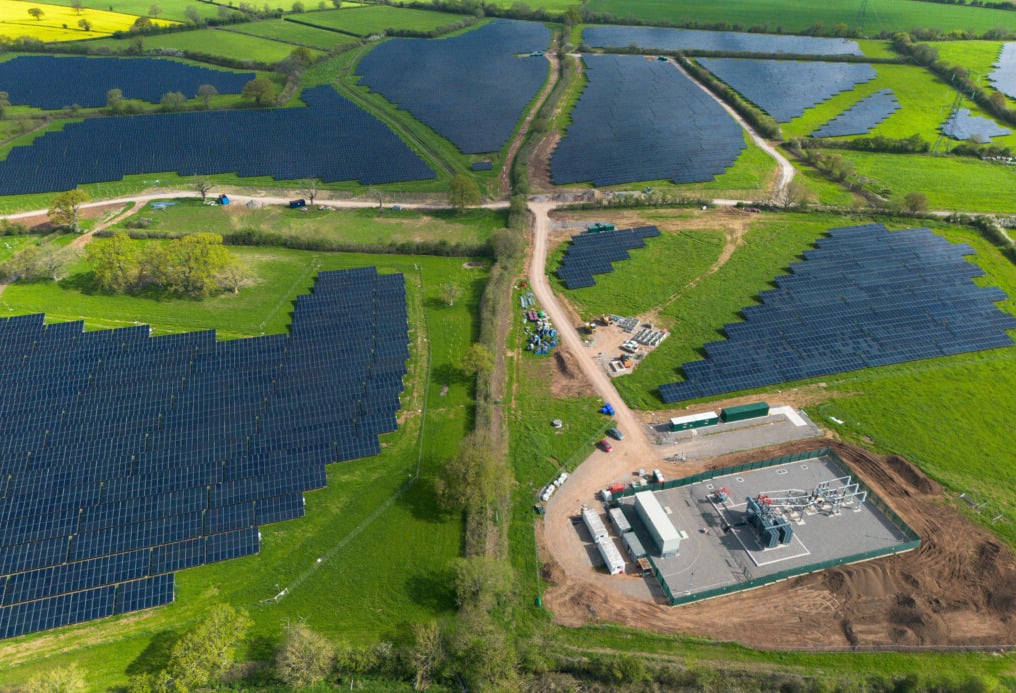
The project has a 120MW grid connection and, once complete, will combine a 50MW BESS array and 50MW of solar PV, the latter operational since May last year as per our sister site Solar Power Portal’s reporting. The PV project was the UK’s first transmission-connected one, and with the addition of the BESS it will become the first solar and storage one too, Cero claims. It was co-developed with developer Enso Energy.
Its next solar and storage project in the UK will have a roughly similar generation profile, with a 57MW BESS and 50MW of solar, but will only have a 57MW grid connection. That means different considerations to commercialising it, as O’Connor explained.
“For the Larks green project, EDF is doing route-to-market and optimisation, the solar has a PPA, and because the project isn’t oversized the BESS is not competing with the solar for export capacity.”
“For our new, oversized project, the BESS will be equal to the grid connection size, meaning the PV and BESS will use the same constrained grid connection. This has a minimal effect on the revenues available to the PV and BESS due to complementary export profiles. We expect the solar project will have a CfD or PPA.”
PV module and BESS firm Canadian Solar is providing engineering, procurement and construction (EPC) services for the Larks Green project.
Co-location challenges
As Energy-Storage.news has previously reported, co-locating solar and storage with a shared grid connection poses challenges around maximising the value of both assets, despite what O’Connor said about the minimal effect on revenues. Without a grid connection large enough to accommodate both assets discharging at maximum output – as Larks Green has – compromises have to be made.
O’Connor’s senior, Tadgh Cullen, head of energy storage for Cero, said at Solar Finance & Investment Europe (SFIE) in February that optimising co-located projects was much more challenging than standalone BESS.
That was echoed later that month at the Energy Storage Summit EU 2024, where optimiser Arenko’s CEO Rupert Newland said there wasn’t a proven commercial model across the sector for co-located projects, as reported in another of our sister sites PV Tech.
Speaking anonymously, a separate source for a developer/IPP told Energy-Storage.news, in agreement with Newland: “The commercial structure for a true co-located project doesn’t really exist yet. People haven’t figured out how to price the shifting of renewable generation into the evening. If you can’t get a fixed income stream then it makes financing hard. No one has figured out who is taking the risk in that scenario.”
Solar and storage projects have generally only proliferated at scale with specific subsidies, with examples including the Innovation Tenders in Germany or the investment tax credit (ITC) in the US before it was extended to standalone energy storage projects. The other route by which they have been commercialised is via long-term tolling agreements and PPAs covering the whole project, generally by large utilities, again mainly in the US.
However, projects are expected to be built at scale without specific subsidies in places with high solar penetration, including Chile and Spain. O’Connor said Cero is preparing to add battery storage to its solar projects in Spain, with co-located projects soon to be the most commercially active project type there.

